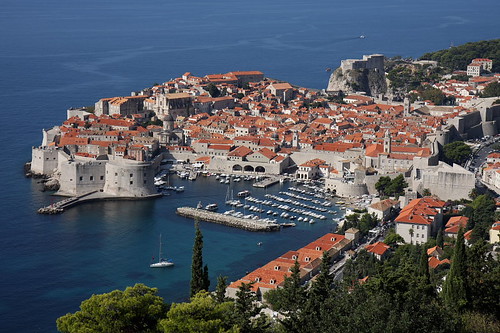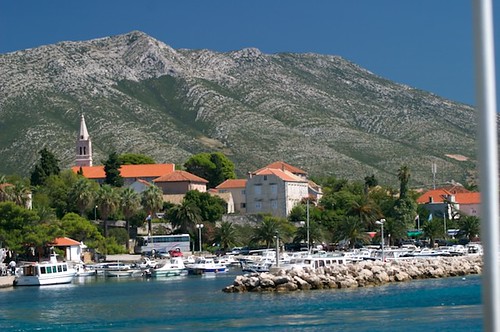
Dubrovnik is a coastal city of Croatia, located in the south of the capital region of Dalmatia and Dubrovnik-Neretva County. Its historic center, declared World Heritage by UNESCO, is its greatest attraction is fascinating to anyone who visits.
Although its origins date back to the seventh century, are few vestiges of buildings prior to the seventeenth century, when an earthquake shook the entire city.
In Luza Square, surrounded bars and cafes, is the Clock Tower, where the two bronze statues are charged with bells to announce the arrival of each new time. Some are some of the most important buildings, such as the palace Sponza, the church of San Blas, patron of the city, the Rectors Palace and Cathedral Velika Gospa, built in the twelfth century and rebuilt in Baroque style XVIII.
Some day trips that can be performed are:
* The National Park Mljet Island, a natural paradise that is accessible by boat from the port of Dubrovnik and it takes from 1 to 2 h, depending on the type of boat.
* The Peljesac peninsula which offers culinary highlights the famous oysters of Ston.

* The island of Korcula, birthplace of Marco Polo famous navigator. You can visit it by land, crossing the peninsula of Peljesac and catching a ferry leaving every half hour from the village of Orebic (the trip takes about 15 minutes) or a boat trip from Dubrovnik.
* A good option is to rent a small boat in one of its many marinas closer to discover the nearby islands and small coves along the coast.
* The «Night of the Pescadores», held in June, July and August on the banks of Trpanj (on the Peljesac peninsula, an hour and a half of Dubrovnik). Is carried out as wine tasting, performances by Klapa (a cappella groups), concerts, and donkey races, the highlight is the simultaneous lighting of the mountains of Skojera, where there is a statue of the Virgin Mary, and Pier Bay Trpanj. This show lasts one hour and then the young fishermen out of the bay in boats with lighted torches.
* The region Konavle, plain Rudin, Majkovo the depressions of the field and Mount Black Ston. They are beautiful places with a privileged nature for those who love the natural wonders.
* The Arboretum (Botanical Park) Trsteno, with a large number of plants are protected from the places not to see Croatia.
* The island of Lokrum has a horticultural park around the Benedictine Monastery.
* Botanical Park, houses a large collection of tropical ornamental plants.
* The Makarska Riviera, famous for its sheltered coves and beaches surrounded by pine trees.

How to get there?
Croatia can be reached until several ways, either by plane (recommended if you are traveling from Western Europe), by train through the Balkans or road. He also boat across the Adriatic Sea. In summer there are direct flights from Madrid and Barcelona to Dubrovnik. Once there, you can rent a car that would be the best way to maximize the country and it is more advisable to do so along the coast. It’s easy to go from island to island or from one of the major cities of the Croatian coast to an island because the ferry traffic is continuous and fairly well organized, better than the bus to go from city to city.
Accommodation:
A double room in a 3-star hotel costs from 70 € per night. Another option is apartments with space for two to six people costs from 40 euros.
Leave a Reply
You must be logged in to post a comment.
Recent Comments